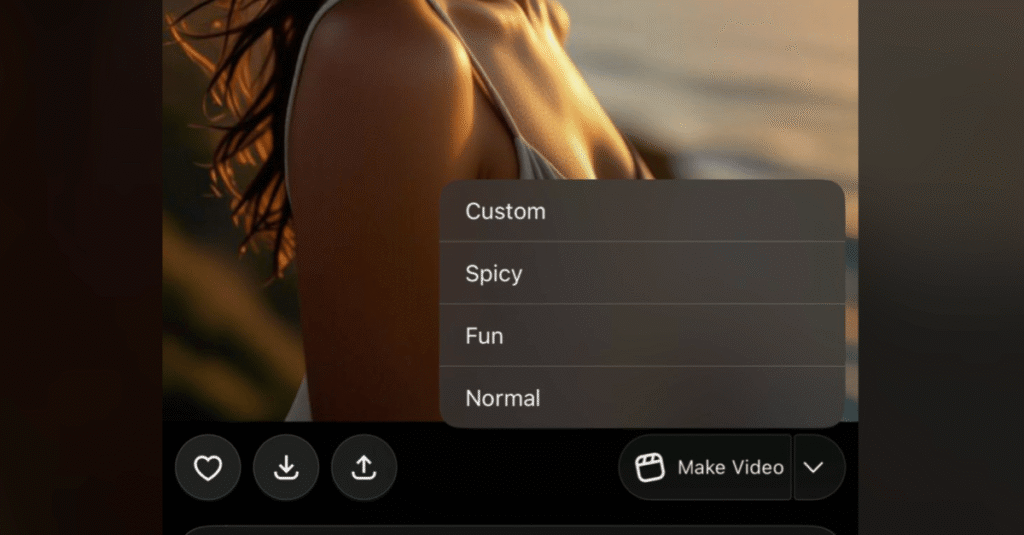In today’s rapidly evolving digital landscape, small and medium-sized businesses (SMBs) are increasingly turning to AI tools for efficiency, creativity, and competitive advantage. Among the myriad of available options, two noteworthy contenders are xAI’s Grok Imagine and OpenAI’s Sora. Both offer unique features tailored for creative content generation, but they differ significantly in focus, usability, and regulatory practices.
Grok Imagine, recently introduced by xAI, serves as an AI image and video generator with a notable emphasis on unrestricted content creation. Unlike its competitors, Grok Imagine encourages users to explore diverse styles, including photorealism and anime, providing a “Spicy” generation mode that allows explicit content creation. This openness marks a departure from tools like Google’s Veo and OpenAI’s Sora, both of which implement stricter controls to prevent NSFW content. For instance, while Veo allows for sound integration into videos, it enforces limits on the type of scenarios that can be generated. In contrast, Grok’s straightforward approach may attract users keen on exploring adult themes but could also lead to ethical and regulatory discussions.
When examining the features of Grok Imagine, it becomes apparent that its image generation capabilities are flexible and user-friendly. Users can generate images based on textual descriptions or convert existing images into short animations. The inclusion of voice input for prompts further extends accessibility, catering to users who may prefer a more interactive experience. However, the requirement to start with a base image for video generation can be seen as a limitation, especially compared to Sora’s more seamless text-to-video capabilities. Sora is designed for straightforward workflow integration, making it suitable for teams looking to quickly turn written content into engaging visuals without navigating a multi-step image-to-video process.
Reliability can be a decisive factor when choosing between these tools. Grok Imagine has seen significant user engagement since its launch, with over 34 million images generated shortly after introduction. However, its content policies appear prone to exploitation, leading to concerns over the potential for misuse. On the other hand, OpenAI’s Sora is built on a reputable infrastructure with a focus on safety and compliance, offering a more controlled environment beneficial for businesses concerned about brand safety and content appropriateness. This difference in reliability could influence an SMB’s choice, particularly in industries with strict advertising guidelines or ethical standards.
Cost is another critical consideration, with Grok Imagine available to SuperGrok and Premium Plus X subscribers via its app, while Sora follows a subscription-based model that may offer tiered pricing based on usage and scalability. The pricing structures of these tools can impact total cost of ownership significantly. With Grok, businesses may incur additional costs if they require premium features for advanced content creation. In contrast, Sora’s model could allow for predictable budgeting, especially for small teams looking to scale their operations without unexpected charges. Additionally, businesses should assess the long-term value of these tools by evaluating the expected return on investment (ROI). For instance, investing in Grok Imagine for creative campaigns targeting specific demographics could yield a high engagement rate, provided the content aligns with company values.
Integrations are crucial for seamless functionality within existing workflows. Grok Imagine’s limited video generation feature currently restricts its integration potential in comparison to Sora’s advanced API capabilities, which allow businesses to embed video creation functionalities directly into their content management systems. This could streamline processes for SMBs that rely heavily on content marketing, enabling them to maximize efficiency and effectiveness during campaigns.
For businesses considering transitioning to these AI platforms, a low-risk pilot project could involve using each tool for a specific campaign or project. By leveraging basic features at first, businesses can evaluate how well the tool meets their creative needs before fully implementing it across their organization. This pilot approach minimizes disruption and provides valuable insights for broader deployment.
In summary, both Grok Imagine and OpenAI’s Sora each excel in different aspects, catering to different business needs. Grok Imagine appeals to users looking for creative freedom and flexibility, especially in generating unique content. However, it raises concerns regarding regulatory practices and brand safety. Conversely, Sora’s focus on safe and compliant content generation makes it a suitable choice for businesses with stricter guidelines.
FlowMind AI Insight: Investing in the right AI tool can significantly enhance your business’s creative capabilities and streamline content production, making it crucial to evaluate each platform’s strengths carefully. Balancing features with reliability, cost, and integration possibilities will help businesses maximize ROI and achieve sustainable growth within their digital marketing strategies.
Original article: Read here
2025-08-05 07:00:00

